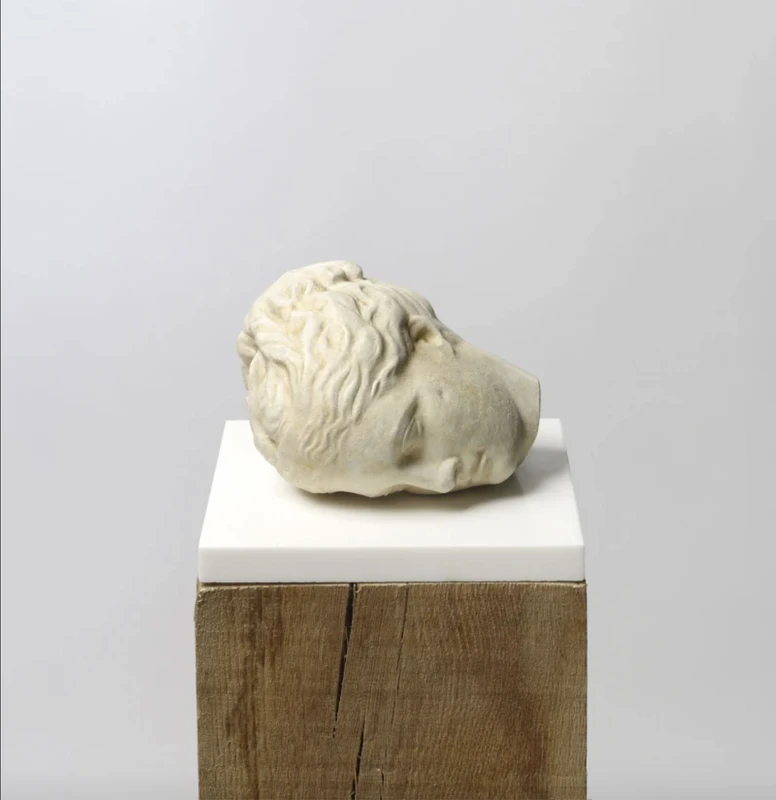Peter Blake: Sculpture and Other Matters
20 Feb-13 Apr 2024


Peter Blake: Sculpture and Other Matters, the first exhibition in twenty years to be dedicated to Peter Blake’s sculpture, reveals a less familiar aspect to the work of one of the best loved and most iconic British artists, spotlighting sculptures that are by turns quirky, endearing or engaged with conceptual concerns. These works function not only as art objects, but offer starting points for imagined narratives, each with a glimmer of Blake’s typically gentle, English sense of humour.
Blake’s work in three dimensions has remained remarkably consistent over six decades of his career. An early engagement with found objects and themes of fandom begins with the seminal ‘Locker’ (1959). This sculpture, an old RAF locker covered in glamorous pin-up images, was first shown at the Institute of Contemporary Arts, London in 1960 and is one of the earliest expressions of British ‘Pop’ culture. Painted wooden constructions from the early 1960s nod to Blake’s earlier years studying at Gravesend, where he was taught woodwork, while ‘Tarzan Box – “Big Iron Bird, She Come”’ (c.1965) demonstrates an early, decisive move toward assemblage and features some of the storybook characters which would recur in Blake’s work in the forthcoming decades.
For those who are well acquainted with Blake’s painting and graphic work, the artist’s ‘Found Sculpture’ series of 2012 will be most surprising. In these conceptual works, pebbles, rocks and other found objects are elevated to fine art status, each placed securely on its dedicated plinth of oak and marble. By elevating the mundane into the realm of art, Blake's sculptures invite viewers to reconsider the significance of everyday objects, challenging conventional notions of artistic materials and prompting a reevaluation of the artistic process. Blake asks us to suspend our disbelief; in the same manner as a child at play, who might imagine a broomstick to become a wizard’s staff or a pop star’s microphone, we are required to think about the imaginative potential of the objects presented to us.
Imagination and storytelling are central to Blake’s sculpture. His assemblages of found objects evoke particular atmospheres, allowing the viewer to piece together a narrative suggested by the components of the tableaux. In the ‘Still Life’ series of 2003, homages are made to fellow artists including Claude Monet, Giorgio Morandi and Joseph Cornell, who take the place of pop icons and movie stars as the subjects of Blake’s fandom. Little jokes nudge the viewer along: ‘In the Cubist’s Kitchen’ (2003) features a tobacco pipe, while ‘Then & Now, For Damien’ (2003) gathers miniature bottles along a shelf, a reference both to Damien Hirst’s (now lapsed) heavy drinking and to Leonardo's ‘Last Supper’ of 1495–1498. In a later series dedicated to artist and cartoonist Saul Steinberg, Blake assembles found items in compositions which directly reference the other artist’s sculptures of the 1970s and 1980s, in which he whittled and painted similar objects in wood. Through his ‘Generals’ series (2012), figures of dark-painted wood pinned with medals and each with a bowling ball for a head, Blake reveals the potential of objects to conjure characters with their own personality traits, while his homage to H.C. Westermann's sculpture mimics the other artist’s narrative quality and symbolism with seaworthy battle ships peppered with plastic figurines.
Throughout the exhibition, Blake dances across a rich variety of cultural and artistic references, and with typically childish enjoyment, he invites the audience to participate actively in the construction of meaning, fostering a sense of playfulness and discovery. On the occasion of Peter Blake: Sculpture and Other Matters Waddington Custot will transform the gallery into an interactive, theatrical space which reflects the imaginative potential of the sculpture on show.